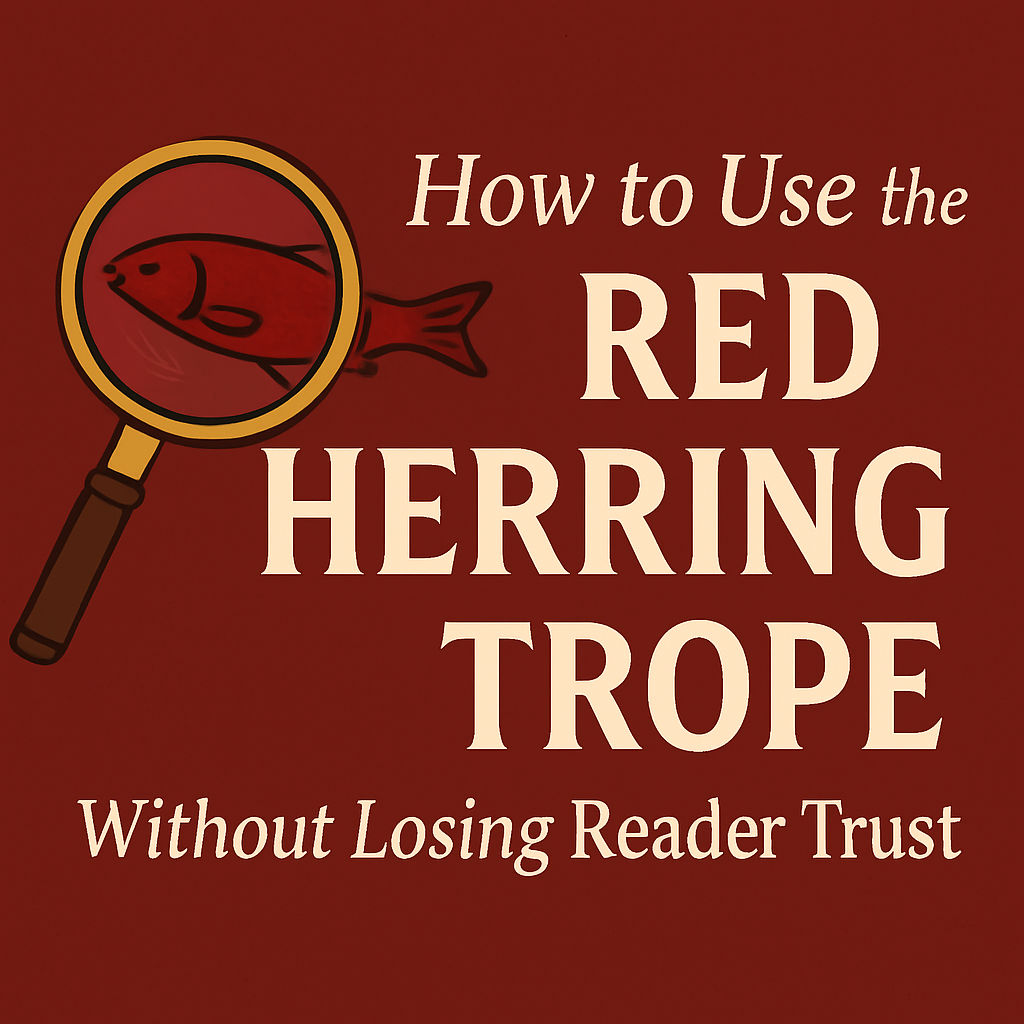The red herring trope is a mystery writer’s secret weapon—and also their greatest risk. When done right, it leads readers down deliciously deceptive paths, only to hit them with a twist that feels earned. When done wrong, it makes readers feel cheated, confused, or downright annoyed.
So how do you use a red herring trope in your story without sabotaging your reader’s trust?
Let’s investigate how to craft smart misdirection that enhances your mystery—not derails it.
What Is the Red Herring Trope?
A red herring is a clue or plot point meant to mislead the reader. It’s a piece of false evidence, a suspicious character, or a coincidence that appears important but ultimately isn’t connected to the true solution.
Classic examples include:
-
A character with a clear motive who’s actually innocent
-
An alibi that seems airtight—until it’s not
-
A clue that looks obvious but is deliberately misinterpreted
Red herrings are essential in mysteries, thrillers, and crime fiction. They’re the breadcrumbs that keep readers guessing… as long as the trail leads somewhere satisfying.
Why Reader Trust Matters
In a mystery book, readers agree to be fooled—as long as it feels fair.
What breaks that trust:
-
Red herrings that contradict known facts
-
Sudden new information that changes everything in the final chapter
-
Overuse of red herrings that make the whole plot feel like smoke and mirrors
The goal is misdirection, not deception. Readers should look back and think, “Of course!”—not “Wait, that makes no sense.”
5 Ways to Use the Red Herring Trope Effectively
Here are five tried-and-true ways to deploy the red herring trope with finesse:
1. Make It Believable
A red herring only works if it feels plausible. If your suspicious character is too suspicious, savvy readers will write them off early.
Tips:
-
Give your red herring real motives and logical behaviors
-
Tie them emotionally to the victim or crime
-
Avoid over-the-top villain clichés unless you’re writing satire
Readers should think, “They could have done it”—not “They definitely did it.”
2. Anchor It in the Plot
Don’t just throw in a red herring as a gimmick. Integrate it into the story so it feels organic.
Examples:
-
A character is evasive about the murder night… because they were cheating, not killing
-
A weapon is found in the suspect’s garage… but was planted there
-
An anonymous tip leads to the wrong suspect… but exposes another subplot
Every red herring should still move the story forward.
3. Pair It with a Real Clue
The best misdirection hides in plain sight. Pair a red herring with a real clue so readers overlook the truth.
For instance:
-
A suspect’s aggressive behavior distracts from a subtle fingerprint clue
-
A fake confession overshadows a timeline inconsistency
-
A red herring reveals the truth… but readers don’t realize it until later
This creates that satisfying “aha!” moment during the reveal.
4. Use Character Biases Against Them
Characters—like readers—bring assumptions to the table. Use that to your advantage.
Try this:
-
Let your protagonist fall for a red herring based on personal bias
-
Create a dynamic where the detective distrusts someone… for emotional reasons
-
Use red herrings to show character flaws, not just plot twists
It makes your red herring feel less like a trick and more like a human reaction.
5. Make the Reveal Matter
When the red herring is exposed, it should still contribute to the story.
Ask:
-
Does this deepen the reader’s understanding of a character?
-
Does it escalate the tension or raise new questions?
-
Does it tie into the theme (e.g., justice, trust, revenge)?
A red herring that leads to something—even if it’s not the killer—is always better than one that evaporates.
Final Thought: Misdirect with Intention
The red herring trope is powerful. When used with care, it enriches your plot, challenges your reader, and amplifies the final twist.
But it should never feel like a prank.
Respect your reader. Trust them to think. Trick them with craft—not chaos.
If they finish your book saying, “I didn’t see that coming, but I should have,” you’ve done your job brilliantly.


